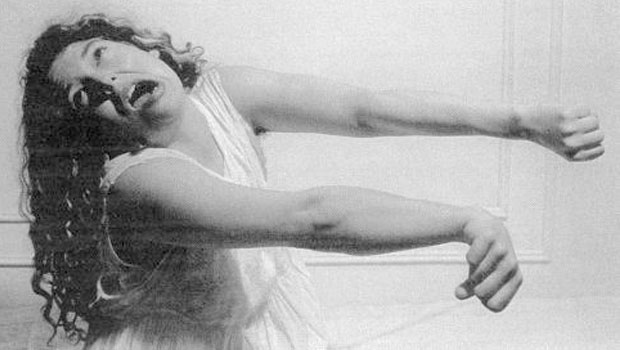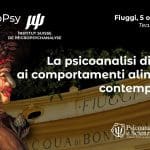S. Freud interest towards experiences dating back to always more faraway periods of man life, gradually increased as he deeper analysed the psychic apparatus knowledge.
His researching laboratory was both his therapy room and the raw material to study his patients’ free associations: thoughts, images, emotions, feelings, fantasies and dreams were externalized and expressed in words during daily sessions.
Things have slightly changed since then, at least according to those experts who went on working following their teacher lessons. Some of them have modified his methods by reducing the weekly frequency of sessions or just the setting; on the contrary, others, such as micropsychoanalysts, have made them longer in order to allow an easier unbinding of any resistance towards the analytic work.
A technique not so unusual to Freud himself who had already applied it to those cases that required more than an hour per day because, quoting him, they took longer to “unfreeze”, that is to become communicative.
Later on, his knowledge of primary experiences became richer by gathering data either from infant psychoanalysis or infant observation. In the 1970s the pioneer publications of A.W. Liley from New Zealand, N. Peluffo as well as S. Fanti claimed the existence of foetal psychic life and the importance of the intrauterine imprinting to allow the human being future development.
N. Peluffo’s interest in intrauterine life focalized on a particular dynamic connecting the mother to her foetus, called “holding/expelling”. This is an ambivalent relation characterized by the co-presence both of conservative and expulsive pushes in the direction of the embryo/foetus.
As Zangrilli wrote, according to the author hypothesis, which found confirmation in recent researches carried out by upcoming immunologists and biologists, the mother ambivalent desire of holding/expelling her embryo/foetus does have a somatic correspondence with the immune reaction due to the presence in the foetus of 50% of alien genetic inheritance. In the author opinion, the inhibition of rejection is linked to psychological, dreamlike and imaginary fantasy experiences of invasion, aggression or extermination.
The pioneer works of those psychoanalysts who have studied the intrauterine life and pre/postnatal experiences found legitimate confirmation in medical discoveries that, thanks to the use of instruments of analysis operating directly on the foetal life, proved the foetus really is a human being in development who can translate different stimulus in an elaborate way, finally making them attitudes of reliable psychic value.
Despite that, a certain mistrust regarding the possible mother/foetus communication still lingers in some contexts. It’s the existence itself of such relationship to be doubted when lacking the object perception and identification. In other words, this doubt covers the communication channel followed in that particular relationship where it is not possible to use the standard expressive codes, such as language, writing or painting.
The question also regards the way in which primary experiences are recorded in psychism in order to be remembered, expressed and communicated.
My aim properly is to try to give an answer to those questions. With the help of clinical material, I will try to illustrate how the recollection of very early experiences mainly affecting the intrauterine life and the relationship between mother/suckling happens, and how these experiences are manifested during long sessions of micropsychoanalysis.
Traumatic experiences, particularly dating back to the earliest phases of development, leave unforgettable traces into the psychism. Such wounds function as captivators of thoughts, images and behaviours structuring in both vigil and oneiric associations, and they tend to repeat in the same way in spite of the age and life conditions of the human beings. The engine of that repetition is the desire of healing the wounds forever, but any attempt is bound to fail and fall in the repetition compulsion constraint.
In his book “How the Soul is Born”, Janus Ludwig deals with the realization of pre/perinatal experiences in psychotherapy. According to the author, the fixation to precocious traumatic events affects the human being behaviour, his self-esteem, his relationships, imagination and feelings. The possibility to “stage” that ancient script in therapy actually enables its elaboration.
The word “realization” is also dear to Q. Zangrilli who employs such term with quite a different meaning. He mentions “the human psyschism realization” with reference to the structuring of a new psycho-biologic entity born by the meeting/crashing of the motherly and fatherly genome interacting with the uterine environment.
I would like to assimilate the concepts expressed by these two authors in order to frame my point of view. It’s always good to start by quoting Freud: “… the patient does not recall any of the elements he has forgot or removed; he rather puts them in act. He reproduces those elements not in the form of memories, but in terms of actions…”
However, it is well known that, in order to proceed with the analytic work, the patient has to keep to a rule that is for the refusal of action; this means that early experiences which cannot be expressed, since they happened in an age when the human being couldn’t talk, need to be translated into verbal language.
The presence of traces of traumatic events leads the person to address to a psychoanalyst, and the personal way to establish love relationships sets the tone of his/her transference relation.
The conscious request of the patient stands for the cancellation of a certain symptomatic state or, more generally, of an oppression behind which there is an unaware need to solve all conflicts dating back to traumatic fixation.
Winnicot deals with the analytic regressions, and he discerns two different types regarding instinctual development:
1. the return to a precocious situation of environmental failure, mainly meaning with this term the primary mother cares;
2. the return to a precocious situation of success.
In the first case, it’s a question of negative regression, that is of psychotic people affected by serious lack of bonding, while in the second case it’s a matter of positive regression, and this is the case of all psychoneurosis. He also sustains that Freud did not succeed in analysing pregenital stages of the human development because he didn’t treat cases of psychosis that offer a large material to all stage of libidinal development. With the exception of those cases that are strongly marked by the fixation to primary narcissism – the latter having in my opinion a few if any possibility of approaching the analysis just because they cannot establish an object relation – I believe the concept of regression in analysis is to be considered together with the one of repetition. In fact, the fluctuation between a developmental stage and another one is evidence of the session associations and the transference intonation, but we cannot exclude the cases of acting out.
In longer sessions, such dynamic manifests itself in a very clear way. In 2/3 hours sessions, it’s possible to observe different developmental stages characterised by repeated attempts of the patient to come closer to the traumatic core, followed by so many withdrawals until in transference/counter-transference situation take place heralding events of homeostatic imbalances, similar in association to those of traumatic events.
These facts lead to the recall and the repetition of traumatic cores inside the analytic relation, and they can allow its elaboration. So I believe that the term “realization” can be used not only with reference to the mnemic retrieval and externalization of traumatic events, but also to the return of removed primary scene or anxiety states regarding prenatal and perinatal traumatisms in the analytic setting. I think that in the relationship between analyst/patient takes place a meeting/crashing of images which represents an existential event similar to the intrauterine one, from a representative and emotional point of view; such event manifests itself on a sensible level through sexual-aggressive fantasies. In the most intensive moments of (energetic) emotion we can find, due to the repetition compulsion, some elements (such as real events and dreams) opposing to the stasis of intrauterine fusionality. These facts can arise moments of great pain, but, at the same time, they can also generate the realization of new vital redeeming attempts. The analyst neutrality can allow the bond in the actual, the recognition and the elaboration. In fact, as Freud pointed out, it really is the reworking of the transference material to produce the greatest changes, thus differentiating psychoanalysis from other suggestive therapies.
Before exposing the clinical material and allow an easier understanding of all concepts, I would like to precise some points. It often happens that the patients make explicit reference to pre/perinatal experiences and events happening in the first months of postnatal life, due to an association with a dream, a movie, a real fact, and so on.
The increased frequency with which, in latest years, this material appears on a sensible level may be also due to the spread of prenatal analysis methods and foetal life knowledge, as well as to the emphasis given to infant cares.
The sentences are usually done in a preliminary way; that is, the person, not having recorded that experience in a communicable code, when he/she recalls it and has to express it in real words, does not feel entirely legitimate to do it. Despite that, in some cases, the reference to foetal or perinatal experiences is the real manifestation of a hidden projective defence that is used to praise the analyst. I mean that his/her resistances often bypass the actual material and refer to past experiences only. Besides, more the past is faraway and more the patient considers it important and useful for the progress of work. It’s absolutely wrong.
In most cases, the reference to the intrauterine life is not explicit, but sort of allusive or metaphorical. It is activated by existential events dealing with work, family, love or analysis – those events being the engine of vigil and oneiric associations whose refrain is the attraction/escape from a containing situation; the quietness of such situation being somehow menaced by a dangerous invader who threatens the human being integrity.
The first case I will expose is that of a young man in an advanced stage of the analysis who, after many urgencies, has succeeded in convincing his fiancée to begin the analytic work, and this girl has come to me. The introduction of a third party (i.e. the fiancée) in the relationship was the actual event functioning as inductor of vigil and oneiric associations where it was reflected the fluctuation between the desire to get rid of the dangerous object/competitor and the will to keep it. To eliminate the third party was equivalent to regress to the symbiotic relation that would have condemned him either to loneliness or to a never-ending analysis, while to maintain it would have reactivated, by means of repetition compulsion, the original oral initiatory trauma.
The dream is the privileged scenario in which we can better identify the fluctuations between the two drives. “M. (the fiancée) and I are riding a bike one behind the other (transference reference: the analyst keeps a back seat behind the patient). Our bicycles become motorbikes and, while riding, M. talks of a former fiancé who gave her great pleasure because of his huge penis. I don’t want to pay attention to those stories because I simply want to love her freely, so I decide to speed up in order to leave her behind. I try to step on the gas, but the throttle goes round in circles; I grab the handle and finally succeed in accelerating, but soon realize I cannot bend going at that speed so I finish in the opposite lane. I think: why do I have to jeopardize my life for a woman?”
Working for associations the patient recalls with yearning desire the beautiful moments of loneliness that he felt just a little while ago when he had time for his favourite hobbies (coming to a session represented for him a pleasant distraction). He then remembers the pleasure of a child running across a green field or diving into the blue. At this point, he cannot make out anymore whether it’s a dream or the reality, and says: I remember I had a dream in which I was swimming underwater and, taking a puff of, I realised I could breathe; the water seemed to be my natural element”.
The patient’s associations goes then through deep communion sensations felt when he was with an old wise person, and he compares those pleasant moments to the feeding time.
The interpretation I give to such associations is that the patient is recalling feelings of his/her prenatal age or dating back to the first months of his life. Moments in which the lack of tension is guaranteed in the link mother-foetus-child by a containing relation that can satisfy both the primary needs and the survival. At this stage, we cannot talk of an object investment or a truthful recognition of the latter, as it is question of pleasure/displeasure sensations which corresponds to the object reaching and relaxation or, otherwise, tension.
Next to the association material afore mentioned comes in contrast the externalization of thoughts and feelings having a sexual background which regard the beloved betrayal. The competitor image (the third party in the relationship) has a persecutory value that can threaten the subject physical integrity. It is therefore necessary to escape, leaving the love object. “Why do I have to jeopardize my life?” wonders the patient. Retreat to a narcissistic attitude is a refuge, but at the same time a menace to the empty relationship that is the opposite of the vital impulse towards the object and the resultant sexual reproduction.
On the sexual drive level, in fact, such movement is translated in a regression that brings phallic/adult heterosexuality aiming to reproduction towards pregenital autoerotism and finally masturbation. It is right to think that the human being leaves his/her narcissistic investments to enter in the Oedipus triangle of family and then society because he/she is pushed by the need of sexual reproduction.
The introduction of a third party which can correspond, in the intrauterine and neonatal symbiotic relationship, to experiences of coital violence, physical and psychological traumatisms occurred to the mother, such as incidents, separations or mourning, creates a sharp break in the homeostasis and represents a menace to the human being psychobiological integrity. The consequence is the formation of a psychic trace of invasion, bullying and annihilation experience, that can be reactivated every time the subject has to face similar emotional situations. The defensive reaction that leads the subject to want the competitor eliminated is lived narcissistically as fear of being attacked and such reaction adds fuel to the persecutor unconscious need.
I would like to expose another case. That of a girl carrying micropsychoanalysis in several periods. The one from which I’m taking all exposed material is an advanced phase of the analytic work, subsequently to the return of repressed material and the awareness of the incestuous relationship she had with both parents. At this point, we had reached the release of most association material regarding sexual aggressiveness: desires of sexual union and of oral appropriation/incorporation, felt sometimes towards the mother, sometimes towards the father.
It is to be underlined that, during the previous period of analysis, one year before, I was myself five months pregnant and my patient had completely ignored it. As soon as we got back to work, once the patient had elaborated the incestuous material, she could recall more recent fantasy experiences that became lively again thanks to the transference relation.
Moreover, during a business trip, her house was occupied by relatives and the fact had generated in the patient a strong sensation of menace and invasion. She desperately wanted to find a solution in order to escape this unbearable atmosphere.
She has a dream in which the analyst, still pregnant, faints but she doesn’t pay attention. Then she sees an airplane with a huge belly, as if the plane itself could be pregnant, falling down and burning. She worries for the people inside the airplane and quickly asks for help. The association material regards her sexual aggressiveness held back by a very strict super-ego who makes her firmly analyse both her relationship and her position. This was an interior voice which she couldn’t give a name to.
“I can more easily think of such entity to be a part of myself but detached… something like the big belly of the airplane… a pregnant woman who, at some point, expels… I cannot conceive the birth of the baby as a joyful event, but more as something devouring from the inside, suckling every energy left over… I see the pregnancy as something terrible… I’m deeply scared of the airplane because if it crashes you cannot escape… when I was over there I thought: this really is a prison, just like in the big belly, as you can’t do anything if not wait for someone to rescue you and hope that your mother in the meantime won’t do anything bad to kill you.
Maybe this is a relief for both of them, I mean mother and child, but then you’re not yet self-sufficient… still, it’s less painful since that belly is way too vulnerable.. I can feel a sense of choking, the same that I felt when my mother hugged me; I needed to stay there and wait… like in that cave on the island when I would have head-butted the rock; if I lose my calm I’ll become a beast and hit mostly myself… I wonder if we constantly feel in danger inside the belly… I fancy my mother running… the baby should be scared as he can see nothing, just like inside that airplane, when everything can be an attempt on your life… who knows what happens when the parents make love… can the baby feel it? How does he/she live that? As an intrusion, a danger? Maybe the couple thinks the baby is an intruder, while the baby sees the father as an intruder, the latter being a stranger body between my mother and I… it’s like I’m not taken in consideration, how can they make love if I am there? I feel to have witnessed to everything”.
According to each specific phase of psychobiological development reactivation, the persecutor looked differently: now it was projected on the Oedipus mother or father in the phallic stage, now on the fusional object/her mother/herself, other times on the intrauterine father conceived as penis-invader disturbing the foetus-mother homeostasis.
A further step which allows the real elaboration of this material is the projection on the analyst: “This is the only place where he can’t say anything. I can imagine he certainly is listening, writing, taking notes, just like You. If he could have all your notes, that would be my condemnation. At the beginning I thought You were such entity that took the place of the controller and could read my thoughts. I talk about a voice, but after all it is my voice, after all I can see myself… it’s sort of the strict part of me”.
The analysis of this case came to a conclusion some days after the fixed date; the patient asked for a short extension in order to complete her psychic birth. The baby, in fact, was born ahead of time since her mother had become intolerant of her belly towards the end of the pregnancy, and so she succeeded in obtaining induced birth but this turned out to be complicated and the baby had to be pulled out with the help of a vacuum extractor. Soon after the birth, her mother fell ill and the doctors diagnosed an auto-immune disease. Quoting Peluffo: “The patient relives the period of stay in the uterus with real facts, hallucinations and foetus fantasies. The analyst parallelly answers reliving the intrauterine relationship he had with his own mother. It’s not a dialogue concerning fantasy experiences, but a parallel passing by of more or less traumatic moments of meeting… The difference between patient and analyst, besides the emotional attenuation of fantasy experiences, is that most often the analyst can analyse further secondary elaborations of infant experiences, as well as the patient will be able to do once he has reached the end of the analysis”
© Bruna Marzi
Bibliography
S. Freud: “Al di là del principio di piacere” (1920) vol. 9 ed. B. Boringhieri, Torino
1980
S. Freud: “Dinamica della traslazione” (1912) vol. 6 ed. B. Boringhieri, Torino 1980
S. Freud: “Osservazioni sull’amore di traslazione” (1914) vol. 7 ed. B. Boringhieri,
Torino 1980
S. Fanti: “La micropsicoanalisi” ed. Borla, Roma 1983
L. Janus: “Come nasce l’anima – la nostra vita psichica prima e dopo la nascita” ed. Mediterranee, Roma 1997.
A. W. Liley: “The fetus as a personality” Australian and New Zealand Journal of Psychiatry, 1972 Vol. 6: 99.
D. Winnicott: “Dalla pediatria alla psicoanalisi” Giunti Editore, dodicesima edizione 1998
N. Peluffo: “Micropsicoanalisi dei processi di trasformazione” Books’ Store, Torino 1976
N. Peluffo: “La situazione” Bollettino dell’ist. Italiano di micropsicoanalisi n° 5 1987
Q. Zangrilli: “The Intrauterine War. The Hypotheses of micropsychoanalysis are confirmed by the evolutionary biology” Multi-media review, Scienza e Psicoanalisi, January 1st 2007.
Responsabile scientifico di Micropsy.academy, piattaforma per l’aggiornamento professionale di psicologi, psicoterapeuti, medici e psichiatri. E’ perito presso il Tribunale Civile di Bergamo. E’ autrice di numerose pubblicazioni presentate a Congressi nazionali ed internazionali. Curatore e co-autore di 4 libri in lingua russa. Possiede un’ottima conoscenza parlata e scritta dell’inglese e del russo.
————
Born in Frosinone on 01.13.1958. Graduated in Psychology at “La Sapienza” University of Rome. She carried out psychoanalytic training in Turin and Switzerland. Member of Italian Psychologists Association since its constitution in 1990 (n.5482). Member of the International Society of Micropsychoanalysis and training analyst of Swiss Institute of Micropsychoanalysis. Main lecturer of the module “Micropsychoanalysis” in the Postgraduation programme of “Psychoanalysis, psychoanalytical psychotherapy and psychoanalytical consultation” at Moscow Institute of Psychoanalysis. She works in Bergamo and Moscow, where she practices psychoanalysis and psychotherapy in Italian, Russian and English with people of different nationalities. She has extended experience on psychotherapy of battered and sexually abused women. She’s trainer and supervisor of several Hosting Communities for children and women and leads master classes for postgraduate psychologists in Italy and Russia. Scientific manager of training platform Micropsy.academy. Expert of the Court of Bergamo: Author of several scientific publications presented at National and International Congresses. She’s fluent in English and Russian languages.
————
Доктор психологии – психотерапевт – психоаналитик. Закончила психологический факультет римского университета «La Sapienza». Далее специализировалась в
микропсихоанализе и микропсихоаналистической психотерапии в Турине и в Швейцарии под руководством Проф. Н. Пелуффо. Зачислена в Орден психологов с самого его основания в 1990 (No 5482). Действительный член Международного общества микропсихоанализа, тренинговый психоаналитик Швейцарского института микропсихоанализа. Руководитель курса по микропсихоанализу в Московском институте психоанализа. Благодаря работе в области медицинских
и социальных услуг приобрела обширный опыт в случаях
психологического, физического и сексуального насилия по отношению к детям и женщинам. Ведет преподавательскую деятельность и супервизии с психологами и психотерапевтами разных учреждений. Эксперт Судьи г. Бергамо. Научный руководитель обучающей платформы Micropsy.academy. Является автором многих научных докладов и статей, представленных как на национальных, так и на международных Конгрессах. Хорошо владеет английским и русским языками.
















